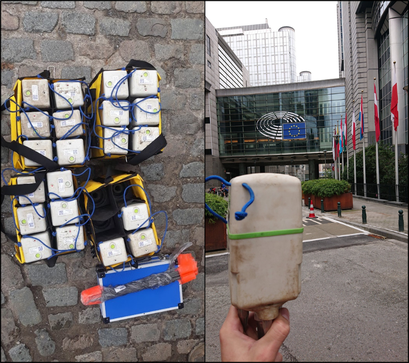
Background
While the EU is on track to meet its goal of 20% renewable energy production in 2020, Belgium’s target number, i.e. 13%, is projected not to be reached (European Commission, 2019). To achieve the required renewable energy share in the total energy use in Belgium, shallow geothermal energy can play a substantial role, especially in the heating sector, which accounts for 48% of the total use of energy. In Belgium, the use of shallow geothermal energy (SGE) for heating, cooling and seasonal storage has the potential to become an instrument for reducing the dependency on energy imports and lowering emissions by enhancing the decarbonization of the heating and cooling market.
Objectives
GEOCAMB is a four year BELSPO funded-project (project nr: NR B2/191/P1/GEOCAMB) granted after the Pilar 1 BRAIN.be 2.0 call in 2019. The GEOCAMB consortium consists of several federal institutions (Geological Survey of Belgium - GSB, Royal Observatory of Belgium - ROB, Belgian Building Research Institute - BBRI) and universities (UGent, ULB). This project aims to evaluate the demand for geothermal energy to heat public buildings and to investigate the geothermal potential of the Cambrian bedrock, present below the Flemish and Walloon Brabant provinces and the Brussels region. The depth of the Paleozoic bedrock in those areas (ranging from a few m up to 300 m) may be adequate for the installation of both open and closed loop shallow geothermal systems. Nowadays, the few shallow geothermal systems installed in those areas end at the contact between the Cenozoic sediments and the Cambrian bedrock (i.e. the Brabant Massif) due to a lack of geological and hydrogeological knowledge of the bedrock.
Investigating the depth to the Brabant Massif
An exploration phase is set up to gather information on the top, nature, structure and geothermal potential of the Cambrian bedrock. This will be realized by drilling and borehole measurements in certain private projects and by geophysical, hydrogeological and geotechnical campaigns. Besides investigating the underground parameters, the GeoCamb project will also evaluate the possibility of using geothermal systems in public buildings. Within GeoCamb, the ROB leads the geophysical workpackage in which the Brabant Massif will be characterized by innovative and non-destructive geophysical methods. Methods that will be used are H/V spectral ratio analysis and passive array-methods applied on ambient noise data acquired with seismometers and with three-component SmartSoloⓇ seismic nodes, also used in the EPOS-BE project. Purpose is to make a resonance map of Brussels that can be converted to bedrock depth, i.e. depth to the top of the Brabant Massif. Previous work of the ROB has shown that resonance frequency matches very well with bedrock depth below Brussels due to high impedance contrast between sediment and bedrock. Using the array measurements, we also will construct several velocity-depth profiles below sites of interest for the GeoCamb consortium that allow deciphering the velocity structure of the soft sediment cover in various regions below Brussels.


